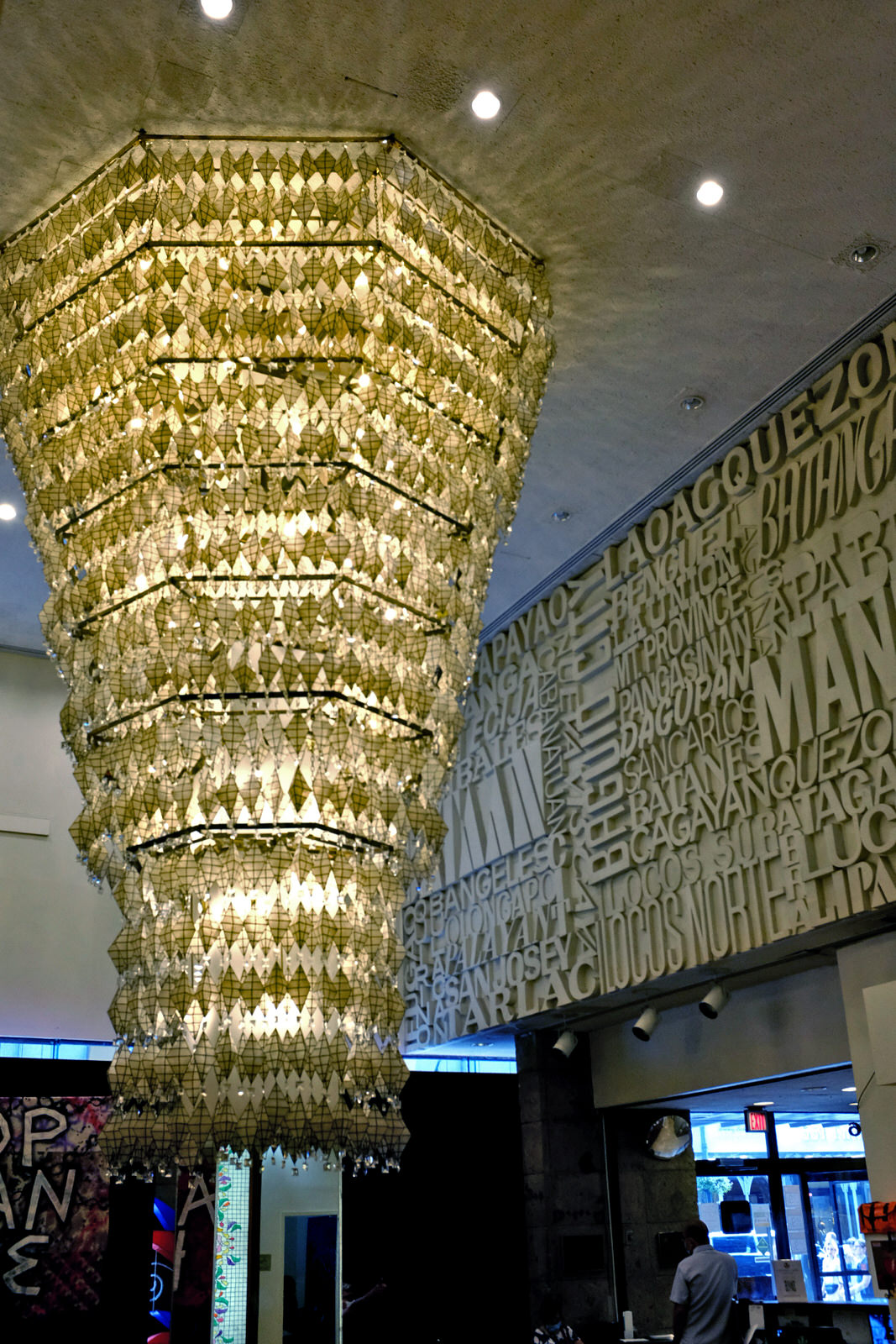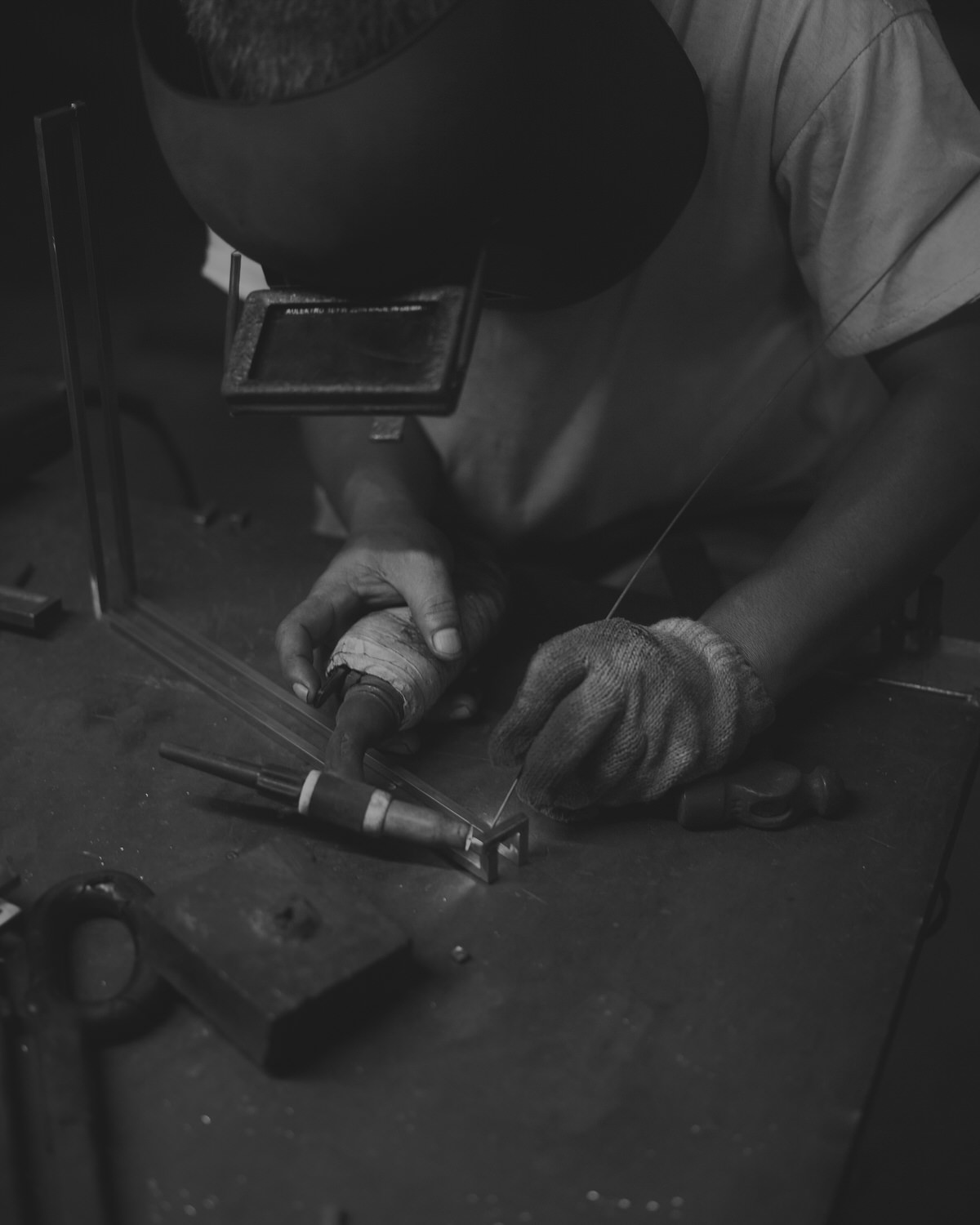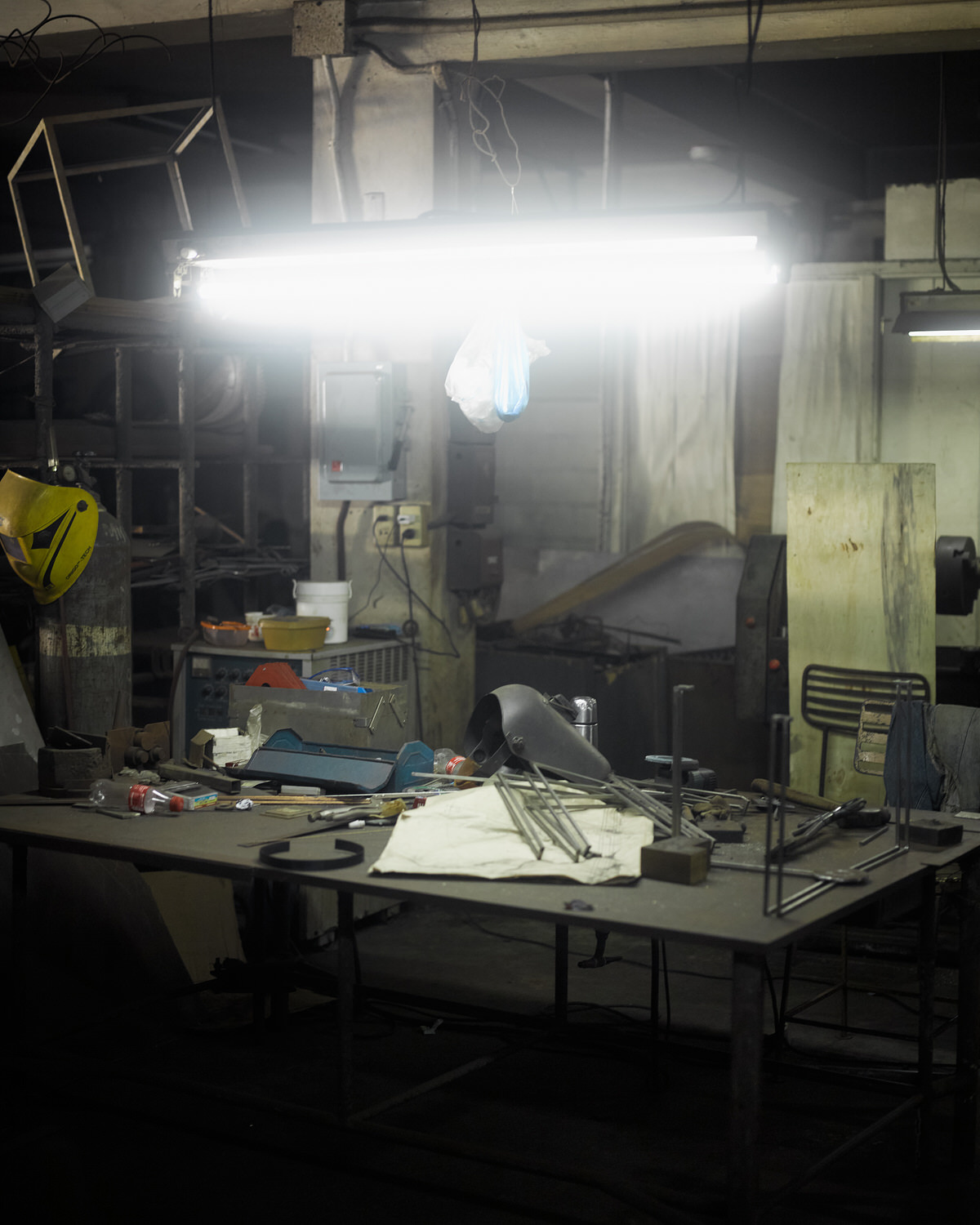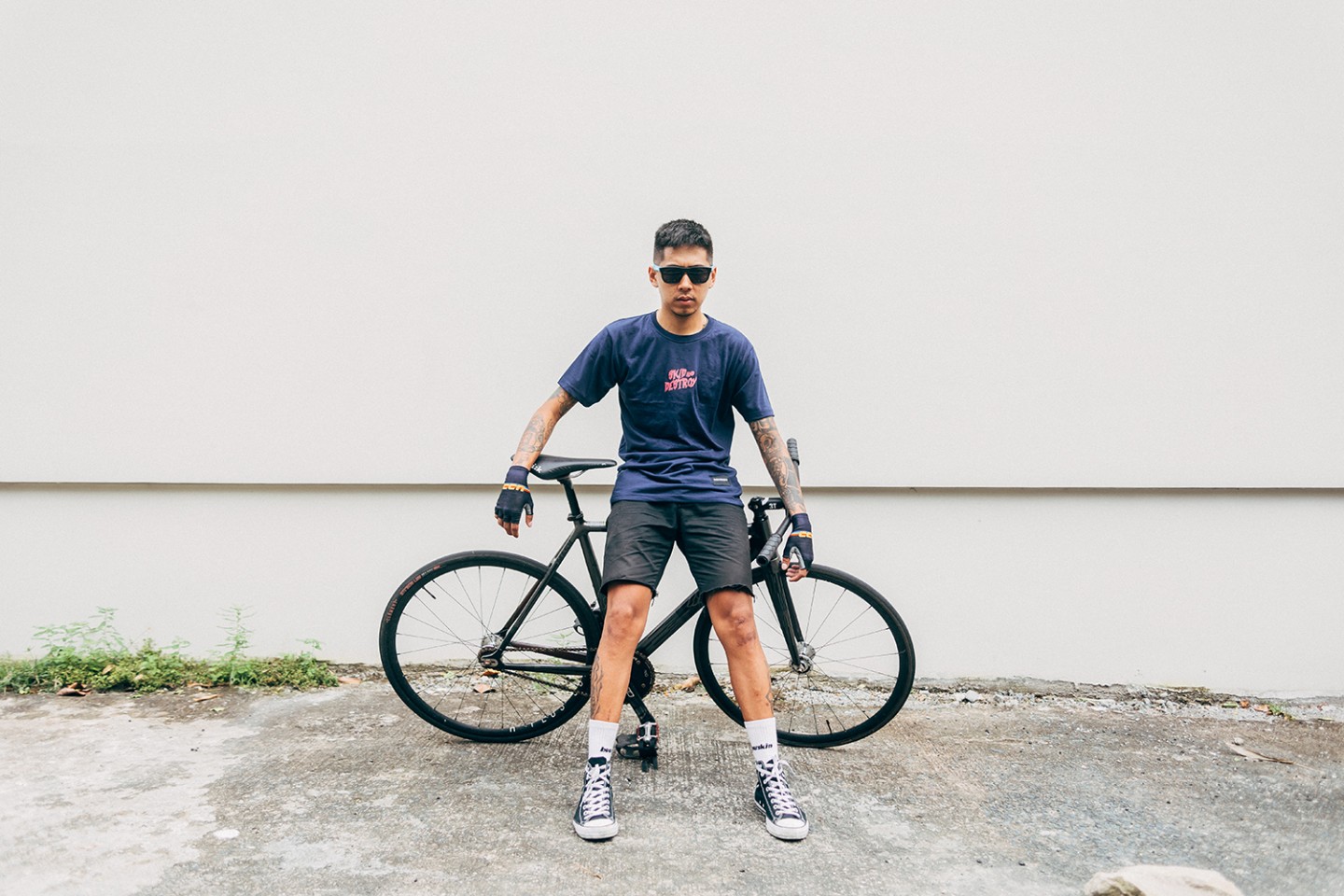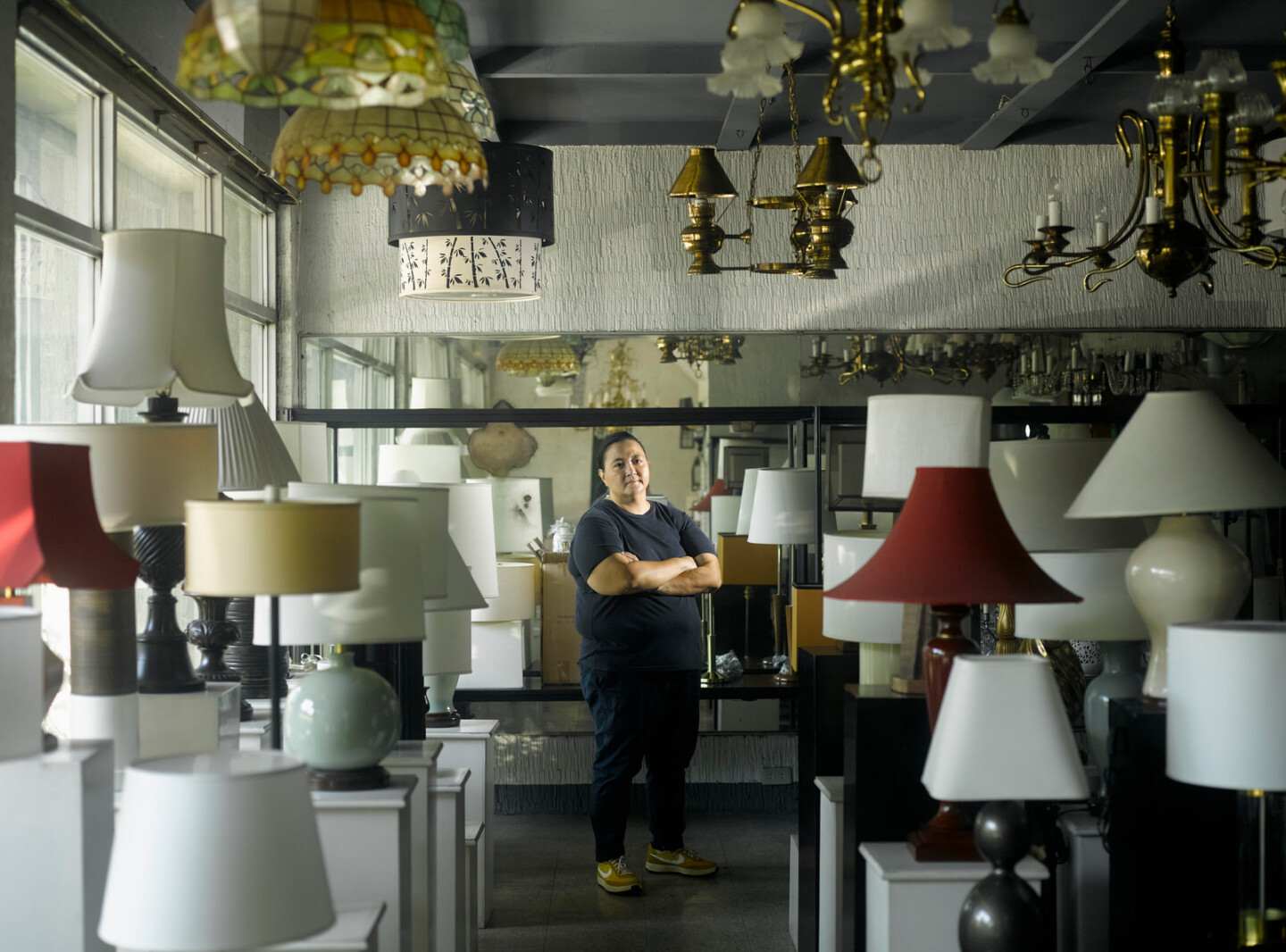
What’s the secret sauce in a business that lasts? It’s a question that comes to mind after reflecting on the last five or so years.
These years have been difficult for entrepreneurs to operate in. We’ve withstood lockdowns, tax law changes, raging inflation, and growingly higher interest rates. Not all entrepreneurs were so lucky though. Instagram stores have popped up, gone viral, and disappeared; brick-and-mortar shops have plugged wads of money into storefronts, only to tear it all down, revisit the blueprint, and start again.
What completely floors me: there are businesses that have not only withstood the last five years, but have been in operation since the 50’s. How are they preserving their legacy while charting a path into a sustainable future?
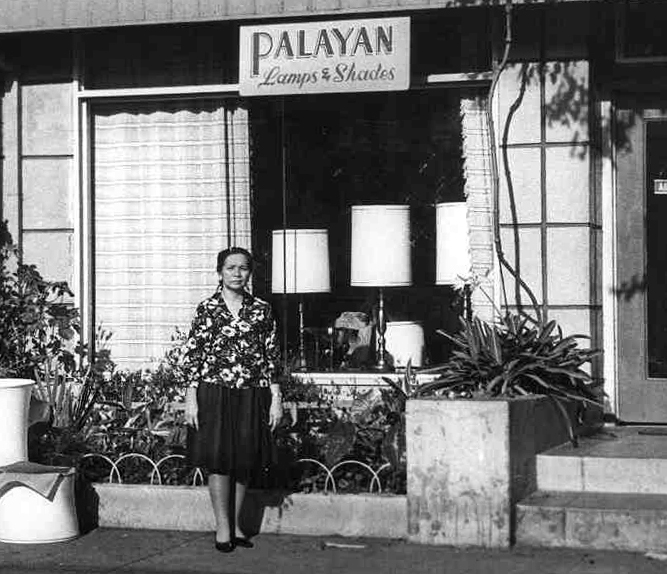
Since January, Sunny Lucero has taken the helm of the marketing for her family’s legacy company, Palayan Lamps Corporation, a contract lighting manufacturing company which began operating in 1954.
“I’m named after my lola,” says Sunny whose complete name is Maria Lourdes Purificacion Lucero. “It doesn’t even fit on a passport,” Sunny laughs. “My mom initially just named me Sunshine. [And] then my lola comes in and says, ‘No, it has to be this name’.”
Sunny’s grandmother Purificacion Lucero started Palayan with her husband Edmondo in their house-turned-workshop on A. Mabini St. in Ermita after already pioneering the manufacture of bakya (wooden clogs) post-WWII.
Palayan pioneered a distinctly local style of lamps
Peering into the company’s history books, we learn of the prevailing import restrictions of the 1950’s. These forced the company to use raw materials in the manufacture of its wares—materials like capiz (windowpane oyster), seashells, and piña (pineapple cloth)—which have given the company a distinct portfolio of lighting installations.
It was this unique flourish, the combination of raw local materials with quality electrical components, that pushed Palayan into the arms of celebrated architects and designers. In the home-based-shop started by Sunny’s grandparents, the pendants for the Regency Hotel and the Cultural Center of the Philippines in Roxas Boulevard were made. These were manufactured to the specifications of Hong Kong-based designer Dane Keller and Associates as well as National Artist for Architecture Leandro V. Locsin.
Design specifications continued to flow into the shop, one of which was the first Philippine-made chandelier to be installed overseas–an installation at the Philippine Center in Manhattan, New York. Other clients to date include hotel and resort chains—Hyatt, Shangri-La, Ascott, Sofitel, and Solaire to name just a few—country clubs, Malacanang Palace, churches, office buildings, and residential properties.
“Palayan really had a peak in the 70s and 80s,” says Sunny. “All these new buildings were coming up. So [the company] had a lot of installations. We survived through the years with loyal clients, very old clients. Old architects.”
Palayan installations are not difficult to spot. They are both grand and uniquely familiar, often ethereal and ornate but always functional. And it is for this as well as the prevailing client attitude of “if no one can do it, Palayan can” that Palayan has enjoyed market success. Not just in the country but abroad too as the company also filled orders in US, European, Australian, and Japanese markets.
But the world has changed a lot since the 70’s
“A lot of lamp stores are retailing now,” says Sunny. “[There are] imports from China and you can get a good lamp from IKEA…or Habitat.” These companies flood the market for lamps and lights with options to choose from, and not just in store but at the click of a button.
“I always have to remind myself that I am not retail,” says Sunny. “Palayan first, and foremost, is a contract manufacturer. We custom-manufacture things.” While there are companies in the world that bust out new designs ala-fast-fashion, Palayan works in a world built on relationships. On the process of creating output Sunny says “We’re really dependent on designers. Architects come in and source for either a home or institutional projects, and we create from there based on their designs.”
It’s worth noting at this point that Sunny is bringing a fresh set of eyes to the legacy business. By trade, and for 27 years no less, Sunny is a producer with work across agencies and in a freelance capacity–having shot material for such brands as KFC and Oishi. “It was a challenge for me to inject what I learned in producing a commercial into producing a really tangible thing like a lamp,” says Sunny. She notes the similarity in the processes. “[The client] tells you what they want, you figure out how to do it, and you go through the same motions. You do a prototype, and then you submit the final material.”
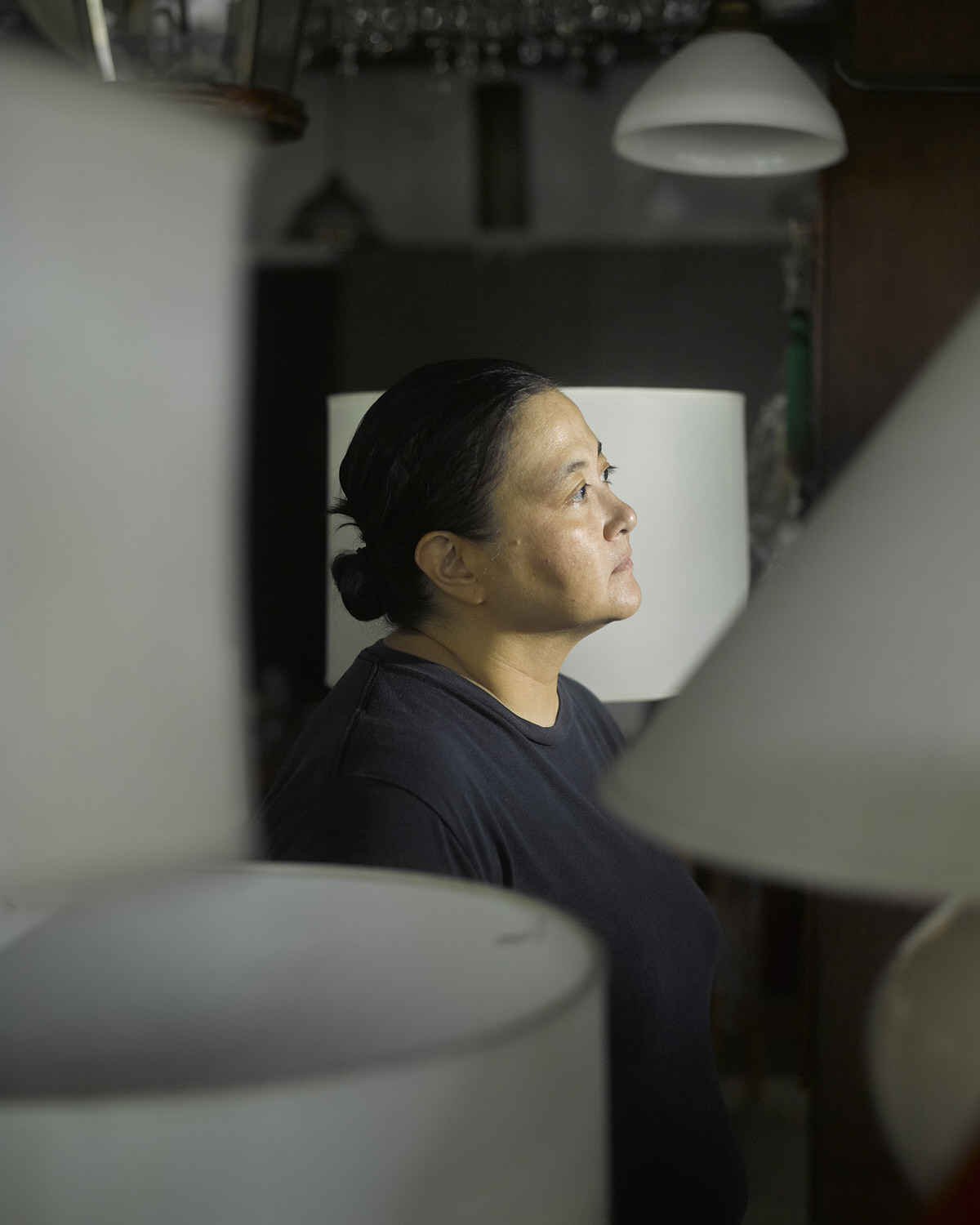
As Sunny enters the company, questions of the future direction appear on the near horizon. The long-standing business practices need re-invigoration, marrying the relationship forming mom-and-poppiness of the contract manufacturing business with an active approach to getting new architects and interior designers interested in Payalan’s capabilities.
Sunny’s first project within Palayan is turning something old into something new. “My lola [once] brought me into [a] bodega (warehouse) with the midcentury stuff,” says Sunny. “And I think I stayed there in [the] dusty bodega for like an hour.” Quickly in love with the pieces, Sunny kept three and has moved them from apartment to apartment.
Most of the pieces are from Peill & Putzler, Glaschutte Limburg Germany, Kastrup Glasvaerk of Denmark, Iittla of Finland, and Venini of Italy. Their shapes and colors are a trip into art deco. To get this project off the ground, Sunny is pulling the relationships and collaboration strings.
Following Mid-Century Manila on Instagram was the seed for the key relationship. Recalling the beginning of the relationship with Ken Mishuko, who co-founded Mid-Century Manila with his wife Isa, Sunny says “[I followed] him on Instagram and one time there was a chair that I wanted, so I asked him [about it, and] he sold it to me at a really good price. And after that, we’ve been chatting.”
Fielding inquiries for the mid-century lamps, Sunny quickly saw a base of demand for imported lamps from the 60’s—right in the mid-century. ”So that’s exactly why that is the perfect vehicle,” Sunny says, “[to market the] lamps and to stage them […] in a showroom.”
When Sunny went to Biñan, Laguna to meet Ken, she was joined by Dante Dizon, creative director at 13 Lucky Money. Dante represents the incredible talent working within the Philippines’ creative space. In nooks and crannies, between day jobs, and small businesses designers are pushing the envelope within their own design mediums while creating bridges into others by way of the “collab”.
Such a collaboration has captured Sunny’s interest. Sunny comments that while architects come to the shop with designs for their home or institutional projects, she’d like to take Palayan’s contract manufacturing capacity and mould refreshed lines for the company. “It’d be nice to collaborate with artists,” says Sunny. “I don’t think we’re gonna get into retail soon, but it would be really nice to have some pieces [done in] collaboration with artists, like for example Dante…he’s [also] doing metal work.”
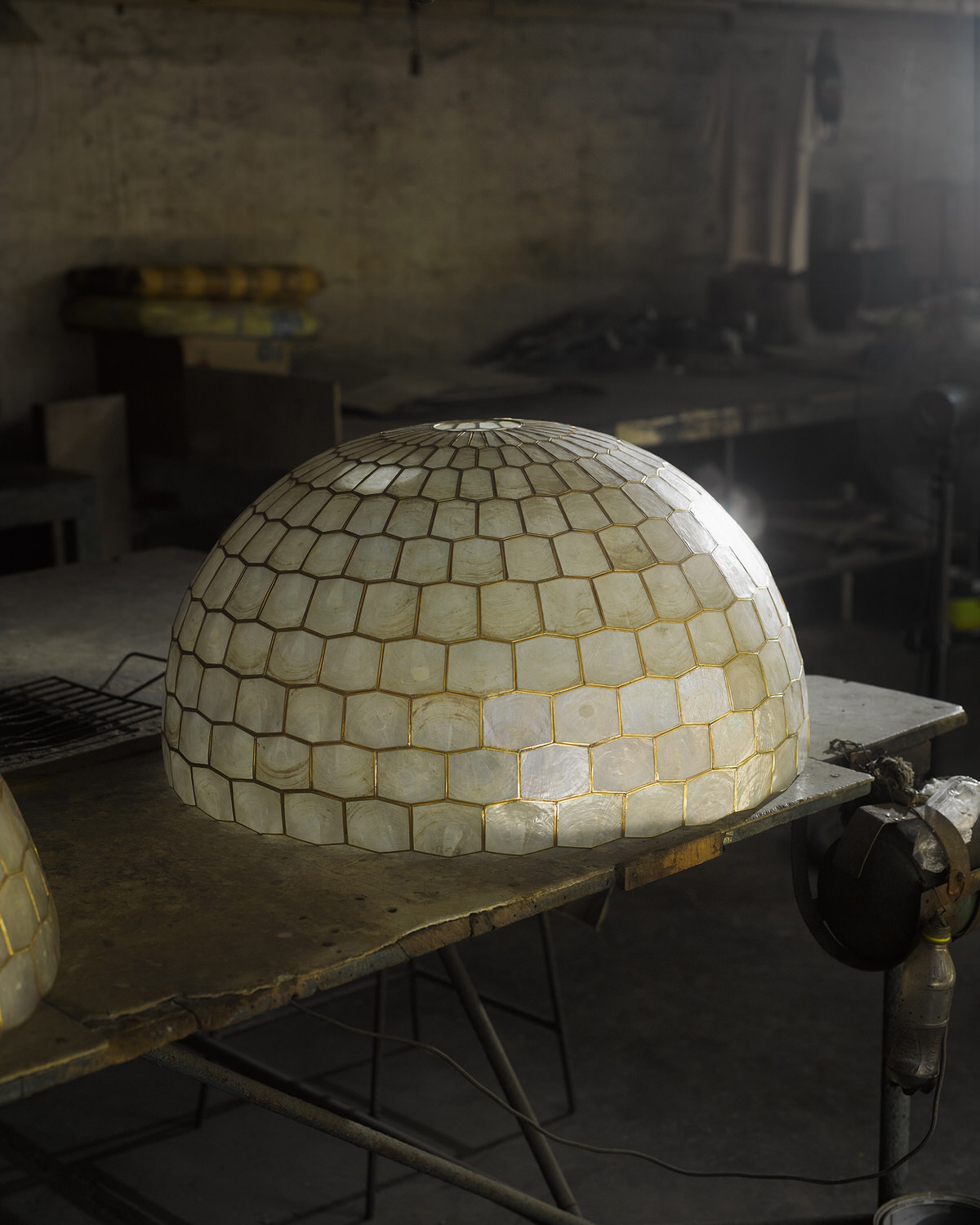
Sunny sees this collaborative approach as a way to interact with new artists to create collections of highly limited and singular luminaires. “We have a full metalworking section,” says Sunny. “Everything is handmade down to the rivets [and] some screws.” The Palayan workshop is hence capacitated to fabricate collections of floor lamps and table lamps–or enough lamps to complete the look of a room–sketched out of the minds of local artists, be they interior designers, fashion-workers, or even chefs.
“It’s exactly what we’re doing for architects anyway.”
And it’s this mechanism that will welcome the next generation of Philippine architects and interior designers into the Palayan ecosystem—proof that the age of a company doesn’t inhibit management’s ability to innovate and appeal to a younger client-base.

Balancing the new projects with the legacy ways
While this direction for the business treks into the bold and exciting, Sunny keeps in mind the mom-and-pop heritage that Palayan is known for. “We’re the first to admit that Palayan has been run like a mom and pop [shop],” says Sunny. “I have no plans to make it super corporate either. I just want to strike a balance between a personal mom and pop service and a collaborative company rather than just waiting for a designer to come in and say ‘Can you make this for us?’.”
Sunny recalls her grandmother in the physical store. “She talked to everyone,” says Sunny, “and it’s a personal relationship.” From refurbishing lamps and metals, to making new shades (which helped keep the business going over the course of the pandemic), and sourcing new clients (many of which are churches apparently), the business remains relationship-focused. “It helped us [that] word of mouth is a huge advertising advantage for us because established architects talk to the younger architects,” says Sunny.
After chatting with Sunny, I came to realise that the contract-manufacturing business for lamps in the country is highly relationship driven. Institutions like hotels and offices, come back to the tried and tested manufacturers that they’ve worked with over the years–not just to manufacture lamps but to refurbish existing wares too.
There is also a mom-and-poppish company culture that Sunny hopes to maintain. “If we [become] too corporate, we might lose some clients who were used to [how we deal]”, says Sunny. Many of the processes internal to the company aren’t centralised, and yet the team of manufacturers manages to get complicated pieces finished. “The lamps are so detailed, [and if] we’re missing three crystals [in a piece, the team knows] that.” Sunny finds that she’s slowly adjusting to this production process after a career spent in a highly process-oriented mode.
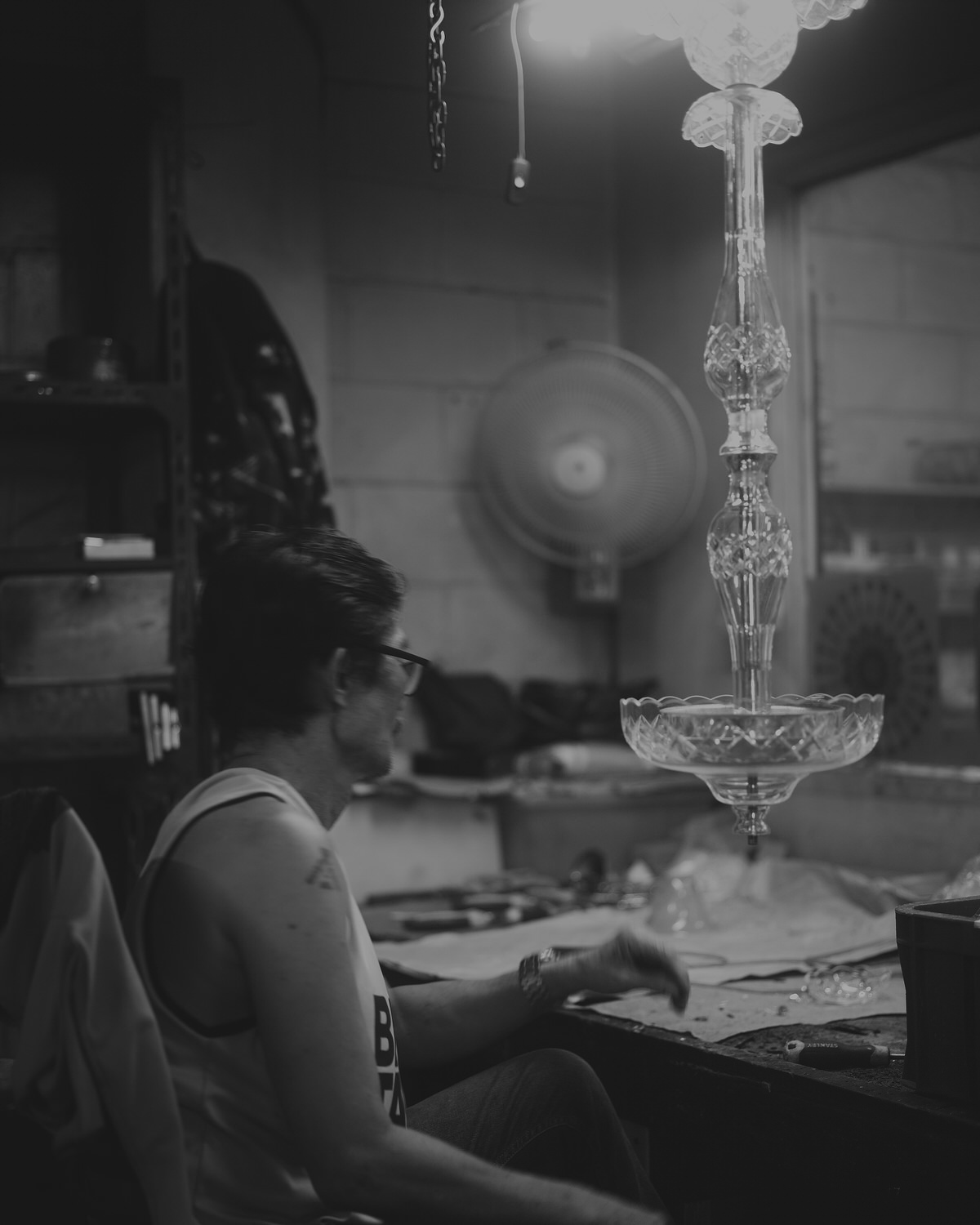
“In my producer work in advertising,” says Sunny, “[I start with a brief on a project], I [organize] the team to do it, and then they present to me each step of the way.” Often in the factory of Palayan, a given project simply gets done without the step-by-step editing. And with all the respect due to what’s worked for over 50 years, Sunny recognizes there’s always room to digitize and improve. “There’s a certain kind of creativity that goes into production,” says Sunny, “as well how to produce something in the most efficient way.”
Expanding the workforce and building new relationships
A risk that Sunny identifies in the operations is the ageing workforce as well as a need to expand the number of craftspeople–especially considering a target of collaborating with one designer per month was floated. According to Sunny some of the workers have been in the business for between 30 and 40 years. It’s no wonder the crafters talk with clients directly. “I’ve seen so many clients that come here and they don’t talk to me but they talk to our sales guys,” says Sunny. “They have personal relationships with them.”
And the family behind Palayan tries to maintain this sort of relationship with the craftspeople as well. “I’ve seen them come to talk to my relatives,” says Sunny. “It’s also nice to see compassion for them.” As a way of obtaining this culture in the organisation, Sunny–and this has been carried throughout a whole advertising career–is sure to set the tone before each work day. “I say good morning to everyone because for me that sets the tone for the day. All the workers, you let them know that you’re here and let them know you’re available.”
In Sunny’s book, if you put the work in, remain focused on the details, and continue to set the tone, results follow–these are the same principles which have guided Sunny’s advertising career.
While Sunny is scouting for artists to collaborate with, she’s also created a bridge connecting her structured production knowledge into a family legacy. Through this channel, collaboration ideas and new sales strategies have cropped up.
Perhaps that is the nature of businesses which last the test of time. Fresh ideas meet with the older rulebooks and forge down new paths. The real crux of the matter is finding the right balance of new and old, keeping the existing client-base while attracting younger architects and interior designers with fresh collaboration concepts. With the right relationships, and tone set on a daily basis, Sunny will help connect Palayan’s rich history with the evolving creative ecosystem.
She mentioned the idea of a skull crafted out of capiz–and that’s just one idea a designer pitched.
“We still have a huge list of designers to tap.”
CREDITS
WRITER Jaymes Shrimski
PHOTOGRAPHER Tim Serrano
EDITOR Tricia Quintero
SUPPORT PURVEYR
If you like this story and would love to read more like it, we hope you can support us for as low as ₱100. This will help us continue what we do and feature more stories of creative Filipinos. You can subscribe to the fund or send us a tip.

